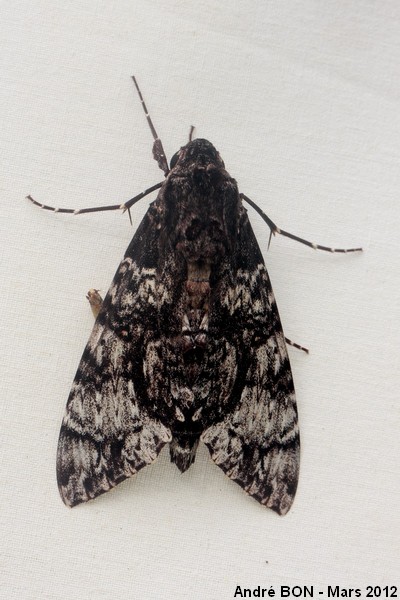
| Isognathus excelsior (Boisduval, 1875) |

|
|
Scientific name: Isognathus excelsior (Boisduval, 1875) Common name: French name: Order: Lepidoptera Suborder: Heterocera Family: Sphingidae Subfamily: Macroglossinae Wingspan: 88 mm for males, 108 mm for females. Biotope: Geographic area: Colombia, Venezuela, Ecuador, Suriname, French Guiana and north-western Brazil. Flight time: Number of generations : Caterpillar: Host plant: Probably plants of the Apocynacae family. |
The Isognathus genus includes 11 species which are mainly found in South America but also in Central America (like Isognathus scyron for example) or in the south of the United States and in the Antilles (like Isognathus rimosus). Isognathus excelsior shows a very dark blackish brown fore wings' base. The remaining par of the wings is white with blackish markings. There is a dominant white colour from the post-medial area to the margin on two thirds of the width of the wing starting from the costal edge. The hind wings are yellow with a broad black border not reaching the anal angle. The head and the thorax are blackish brown. The upper side of the abdomen is grey with black rings interrupted by a dorsal stripe. The under side of the abdomen is a pure white colour. It is marked by 6 small black spots. I have read that this white colour is a rather reliable criteria to tell Isognathus excelsior apart from the similar species. |
| [To know more about the Isognathus excelsior] [Top] |

|
I have shot this picture at Roura, at Camps Patawa, during a light trap night session. Having no view of the hind wings nor of the under side of the abdomen, I have just listed this picture as Isognathus sp. |